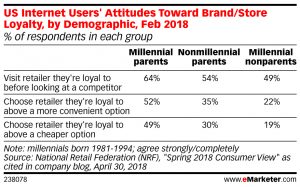For decades the manufacturer’s distribution model was to sell through distributors to get shelf placement at retail. That model has been upended by the Internet, now giving health brands direct access to their end customer. Here’s what to expect next.
Even great brands shied away from selling directly out of fear of creating channel conflict and irritating relationships with retailers.
But, now fighting for retail space has been replaced with competing for clicks to an online store. The power that retailers once held as the sole distribution point for brands is waning. With less than 15% of consumers browsing and buying in stores, a new selling model is quickly emerging.
Generic products created a highly-fragmented marketplace that gave the retailer the advantage. And for good reason. Retailers owned and coveted the highest value placements for themselves. It’s this “do-it-ourselves” model of manufacturing that led to the rise of the (highly profitable) store brand.
And when you already own the distribution channels, you can position your brand to profit. That’s exactly why store brands have carved out a significant part of the consumer market. Costco’s Kirkland brand alone is a $39 billion business, giving it ideal placement in front of millions of customers every year in their own stores.
But this dated retail model of vying for shelf space is quickly changing.
Why?
Direct-to-consumer brands have outmaneuvered the retailer.
If you can cut out the need for distribution channels and physical store locations, retailers lose all of their market power. As brand loyalty decreases, especially among Millennials, direct brands are well-positioned to capture more of the market.
There are three ways direct-to-consumer brands are poised to take over.
1. The internet exposes consumers to more options.
Consumers aren’t limited by what can fit on a store shelf.
Instead of being forced to choose between what retailers carry in-store, consumers can quickly go online to find dozens of alternative options. And they aren’t afraid to try new brands. The influence that retailers once had over what consumers buy no longer exists, making this the perfect time for direct-to-consumer health brands to cash in. The key is in how health brands jockey to capture the consumer’s attention and get valuable online space.
2. Direct marketing makes it possible to sell online.
The barrier to entry has completely disappeared. With the right marketing message, direct-to-consumer health brands can grow their following almost overnight. Add to that a strategic social media campaign, and new brands can effectively upstage existing competitors.
That’s because the focus for direct-to-consumer brands is different. They’re not spending dollars on advertising to grow brand awareness. Instead, their direct response tactics are designed to drive sales. And they have the tools and metrics to track it all in real-time. They know what their marketing is doing, what is working, where it is working, and exactly how to enhance their efforts to 2x, 3x, even 10x their sales.
The result?
A direct-to-consumer brand that doesn’t need retail space to sell.
3. Consumer preferences drive retail placement.
Retail stores are closing at a record pace. Consumers can buy online. Consumers can buy through voice assistants like Alexa. Consumers can buy through apps. And the number of consumers buying outside of retail locations is growing every year.
The retailer is no longer in a power position. They have to find ways to attract customers. The fastest way to do this is to carry the most popular brands. In today’s e-commerce age, what’s popular is often not a “big box” brand. Instead, it is the niche, fast-growing, direct-to-consumer brands that are winning retail space.
In today’s digital marketing ecosystem, it is easier than ever to target specific consumers like fitness junkies or organic food buyers.
This hyper-focused targeting approach cuts out marketing waste and allows you to tailor your message and offers to those most likely to love your product.
Why?
Rather than having to jockey for limited retail placement, direct health brands now have their pick of where, when, and to whom they want their products sold.
In 20+ years in direct response, I’ve seen this shift in marketing power happen time and again. The direct-to-consumer brands that always win are those who have invested in learning how direct response works. Master your marketing message and you can (and will) quickly dominate any industry. The retail landscape has permanently changed. Find a way to use this shift to your advantage and you’ll have no problem growing sales.



